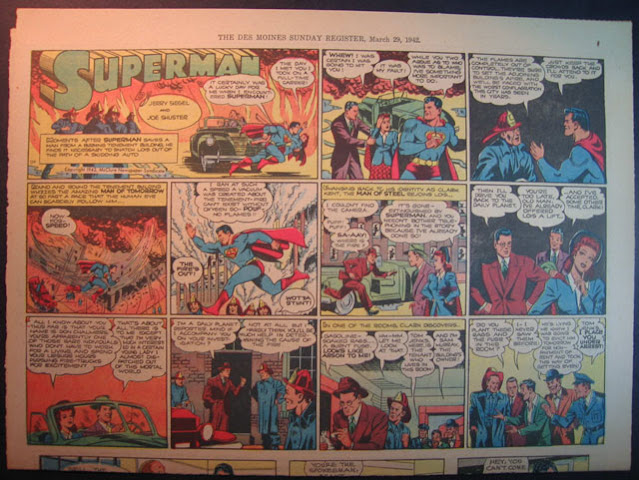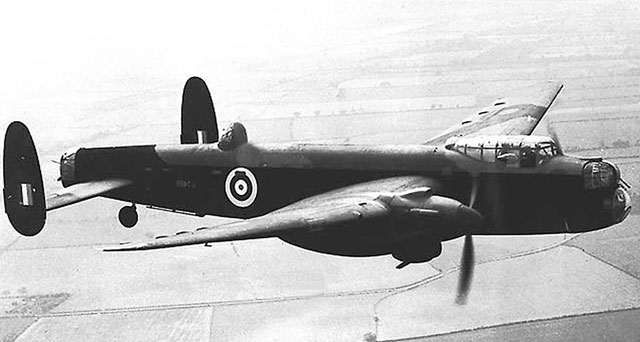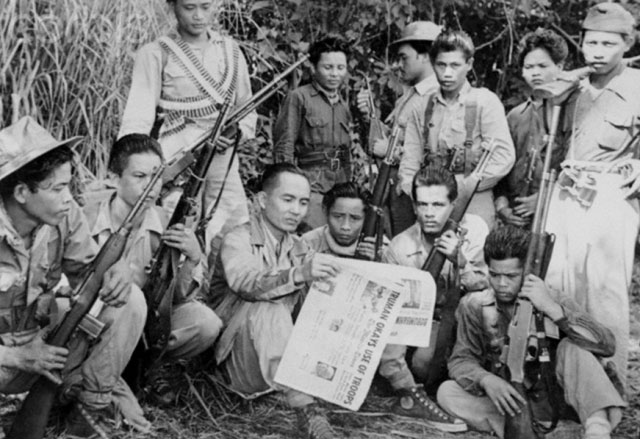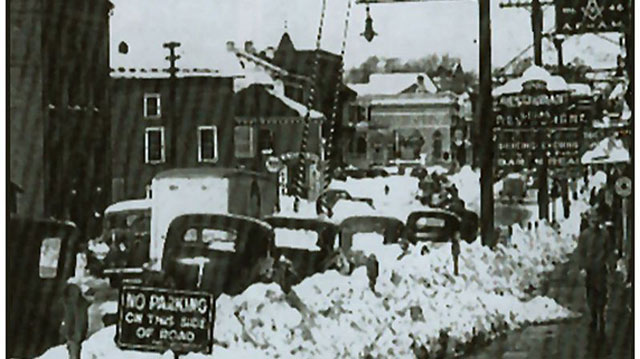Sunday 29 March 1942
 |
| U-160 in a photo taken from U-177 on 19 April 1943. U-160 sank US passenger ship City of New York on 29 March 1942, causing the deaths of 26 men. |
Battle of the Pacific: In one of the weirder incidents of the war, 67 freed German prisoners (missionaries, doctors, and other random Germans arrested by the Dutch) from the bombed prison ship SS Van Imhoff make it to shore on the Indonesian island of Nias. There, they observe a vacuum of power because the Dutch have left and the Japanese have not arrived in force yet. So, on 29 March 1942, they decide to fill the power vacuum and form their own government - the Free Republic of Nias. This they do in the name of Adolf Hitler. Ernst Leo Fischer becomes the first prime minister, with Albert Vehring as the foreign minister.
The Germans scavenge the island for weapons, form armed patrols, and attempt to contact their allies the Japanese. After many adventures, including the "capture" of two Dutch ships in Japanese service, the Germans peacefully turn the island over to arriving Japanese troops on 17 April 1942, greeting them from shore with Hitler salutes. One could say that this is the Reich's wartime possession that is further east - or west - from Berlin.
In Burma, Reinforced Japanese troops of the 55th Divison push back Chinese troops of the 200th Division at the city of Toungoo. After nightfall, the Chinese begin withdrawing east across the Sittang River. The withdrawal continues through the night.
 |
| Superman Comics, 29 March 1942. |
This command rearrangement at Northwest Front shows some understanding at the highest levels of the Soviet command that political commanders like Bulganin are a liability during important operations. The USSR is unique in having a dual command track at this point, with political operatives such as Bulganin being able to meddle in military operations. It is not a system that is beneficial to the conduct of military operations because the political apparatchiks don't have military training and like to throw their weight around just because they can. Eventually, the Stavka strips them of all military authority, but at this point, they remain a constant irritant for the generals who must seek their input and approval prior to any big operations.
The Germans, meanwhile, are having more difficulty with the weather than with the Soviet defense. The Rasputitsa, or spring thaw, is in growing in intensity. General Seydlitz knows his troops are exhausted from their advance to the Redya River and needs to regroup.
At the Battle of Suursari, Finnish troops capture the last Soviet holdouts on the island of Gogland. Some Soviet troops make a desperate march across the ice to the nearby Moshchny Island to escape capture and are strafed on the way by Finnish Air Force fighters. This completes the Axis capture of Gogland.
 |
| A type 1 Manchester bomber of RAF No. 83 Squadron embarking from Scampton on the Lubeck raid of 28-29 March 1942. This photo was taken at about 19:30 on Saturday as the plane departed. |
After several consecutive nights of heavy attacks against Lubeck, Essen, and St. Nazaire, RAF Bomber Command gives the crews and planes an easy night. The only activities are minelaying by 18 Hampdens and 8 Manchesters in the Frisian Islands and off Denmark, and half a dozen bombers on leaflet missions over France. Two Manchester bombers fail to return.
 |
| Broken bells from St. Mary's Church in Lubeck, destroyed during the 28-29 March 1942 RAF air raid. These remain as a monument to the highly destructive raid. |
This is the end of the battle around PQ-13, and fourteen ships (of the original 19) make it to Murmansk and Archangel. However, more members of this convoy will be bombed in port.
U-571 (Kptlt. Helmut Möhlmann), on its fourth patrol out of La Pallice, torpedoes and sinks 10,923-ton British refrigerated freighter Hertford about 200 miles south of Halifax. The ship sinks after being hit by three torpedoes at 21:35. There are four dead and 58 survivors.
 |
| Members of the Hampton (New Hampshire, US) Auxiliary Police, 29 March 1942. |
U-160 (Oblt. Georg Lassen), on its first patrol out of Helgoland, torpedoes 8272-ton US passenger ship City of New York at 19:36 about 50 miles east of Cape Hatteras. This does not immediately sink the ship. The ship's crew spot the U-boat's periscope and get off a dozen shots with the 4-inch gun on the poop deck but score no hits. After taking another torpedo hit, the ship finally sinks at about 20:15. The armed guard continues firing the deck gun until the decks are awash and several of them perish. The ship's crew and passengers have enough time to take to the boats, so 106 men survive while 26 perish, almost half of them from exposure in the bitter and rough weather. This incident is unique in that a Yugoslav passenger gives birth to a son in a lifeboat. She names it Jesse Roper after the destroyer, USS Roper, that finds them.
Italian submarine Pietro Calvi, operating out of Bordeaux, France, torpedoes and sinks 4589-ton British freighter Tredinnick between the Canary and Azores islands. All 46 men on board perish.
Battle of the Mediterranean: A major German objective is to take Tobruk, and the Luftwaffe begins softening it up with an air attack.
Royal Navy MTB-215, missing in action somewhere in the Mediterranean, is written off today. This is one of those mystery ships with no records of the sinking and no survivors.
 |
| Evidence of the Forthcoming Evacuation of Residents of Japanese Ancestry, San Francisco, March 29, 1942. Clem Albers (Photographer), Courtesy The Bancroft Library. |
US/Australian Relations: General MacArthur, known for maintaining a somewhat reclusive lifestyle for a top general despite his prominence in Allied propaganda, takes rooms on the top floor of the Menzies Hotel in Melbourne. For the first time, he meets with General Sir Thomas Blamey, Commander-in-Chief of Australian Military Forces.
Anglo/Indian Relations: A day after publication of the proposed settlement with the Indian nationalists in both London and India, Sir Stafford Cripps meets with leader Mahatma Gandhi. They discuss the plan that promises nothing now, but Dominion status after the war. This means virtual independence "under the Crown."
US Military: The 22nd BG (Medium), 19th Bombardment Squadron, 5th Air Force, transfers its B-26 bombers from Ipswich to Townsville. The 19th BG (Heavy transfers its B-17s from Melbourne to Cloncurry, Australia.
 |
| Formation of the Hukbalahap on 29 March 1942. Holding the newspaper is El Supremo Ka Luis Taruc. Notice that he appears to be wearing Converse sneakers. |
Philippines: A group of 300 Filipino peasant leaders forms a peasant army that they call the Hukbalahap, or Huks for short. The Huks organization grows quickly and there are plentiful weapons to collect from depots and dead soldiers from both sides. The Huks become a popular fixture in local villages and protect them from the Japanese occupiers. After the occupation, they turn against all forms of central authority - including the Filipino government and the United States military - and remain a factor in Filipino life until 1954.
American Homefront: The Palm Sunday Blizzard hits the mid-Atlantic region of the United States. Areas around Baltimore, Maryland, receive up to 32 inches of snow in total accumulation and 22 inches in 24 hours. The snow is heavy and wet and falls on trees and crops that are already blossoming, causing major losses. It is a freak late-winter storm, and temperatures almost immediately return to spring-like conditions afterward, melting the snow quickly. The event is long-remembered, particularly due to its association with the holiday, and is not matched until 1958.
The San Francisco Chronicle reports that "for the first time in 81 years, not a single Japanese is walking the streets of San Francisco." While not completely accurate, that sums up the accelerating progress of the evacuation of persons of Japanese ancestry from the Western Defense Region.
 |
| Palm Sunday Snowstorm" of March 29-30, 1942: Main Street Westminster MD after a heavy and historic 32-inch snowfall March 29-30, 1942. The photo has been attributed to renowned Westminster photographer Charles Magee. (Courtesy Kevin Dayhoff via The Baltimore Sun). |
March 1942
March 1, 1942: Second Battle of Java Sea
March 2, 1942: Huge Allied Shipping Losses at Java
March 3, 1942: Japan Raids Western Australia
March 4, 1942: Second Raid On Hawaii
March 5, 1942: Japan Takes Batavia
March 6, 1942: Churchill Assaults Free Speech
March 7, 1942: British Defeat in Burma
March 8, 1942: Rangoon Falls to Japan
March 9, 1942: Japanese Conquest of Dutch East Indies
March 10, 1942:US Navy attacks Japanese Landings at Lae
March 11, 1942: Warren Buffett's First Stock Trade
March 12, 1942: Japan Takes Java
March 13, 1942: Soviets Attack In Crimea Again
March 14, 1942: The US Leans Toward Europe
March 15, 1942: Operation Raubtier Begins
March 16, 1942: General MacArthur Gets His Ride
March 17, 1942: MacArthur Arrives in Australia
March 18, 1942: Japan Attacks In Burma
March 19, 1942: Soviets Encircled on the Volkhov
March 20, 1942: "I Shall Return," Says MacArthur
March 21, 1942: Germans Attack Toward Demyansk
March 22, 1942: Second Battle of Sirte
March 23, 1942: Hitler's Insecurity Builds
March 24, 1942: Bataan Bombarded
March 25, 1942: Chinese Under Pressure in Burma
March 26, 1942: Win Or Die, Vows MacArthur
March 27, 1942: The Battle of Suusari
March 28, 1942: The St. Nazaire Commando Raid
March 29, 1942: The Free Republic of Nias
March 30, 1942: Japanese-Americans Off Bainbridge Island
March 31, 1942: Japanese Seize Christmas Island
2020